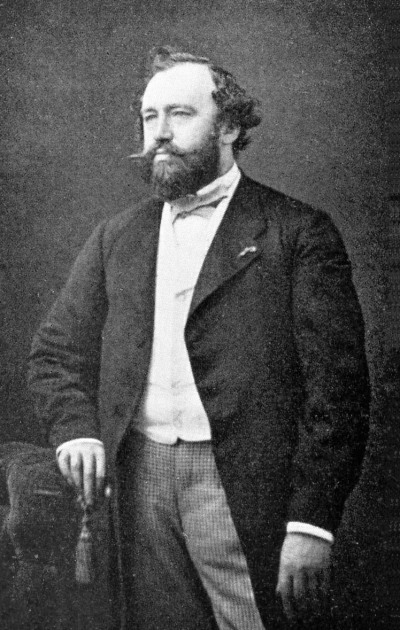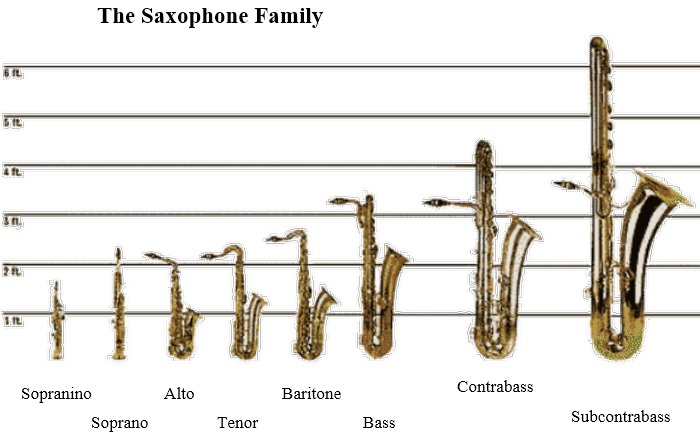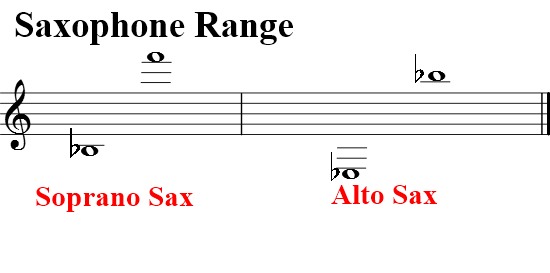The
Saxophone I originally hadn't considered discussing the Saxophone, but as it bears great similarity to the Clarinet, I thought for completeness we ought to mention this important instrument.
The
Saxophone (aka the
Sax) is also a family of woodwind instruments. Saxophones are usually made of
brass and played with a
single-reed mouthpiece similar to that of the clarinet. Like the clarinet, saxophones have holes in the instrument which the player closes using a system of key mechanisms and when the player presses a key, a pad either covers a hole or lifts off a hole, lowering or raising the pitch, respectively.
The saxophone was developed in the 1840ís by
Adolphe Sax, a Belgian instrument maker, flautist, and clarinetist, because he wanted to create a group or series of instruments that would be the most powerful and vocal of the woodwinds, and the most adaptable of the brass instruments, so that they would fill the vacant middle ground between these two sections.

He was born in Dinant and originally based in Brussels, but he moved to Paris in 1842 to establish his musical instrument business. Prior to his work on the saxophone, he had made several improvements to the bass clarinet by improving its keywork and acoustics and extending its lower range.
Sax was also a maker of the then-popular ophicleide, a large conical brass instrument in the bass register with keys similar to a woodwind instrument. His experience with these instruments allowed him to develop the skills and technologies needed to make the first saxophones. As an extra to his work of improving the bass clarinet, Sax began developing an instrument with the projection of a brass instrument and the agility of a woodwind. He wanted it to overblow at the octave, unlike the clarinet, which rises in pitch by a twelfth when overblown. An instrument that overblows at the octave has identical fingering for both registers.
Sax created an instrument with a single-reed mouthpiece (see picture below: they are made either of ebonite or steel) like a clarinet, conical brass body like an ophicleide, and some acoustic properties of both the horn and the clarinet.

Having constructed saxophones in several sizes in the early 1840s, Sax applied for, and received, a 15-year patent for the instrument on June 28, 1846. The patent encompassed 14 versions of the fundamental design, split into two categories of seven instruments each, and ranging from sopranino to contrabass. Although the instruments transposed at either F or C have been considered "orchestral", there is no evidence that Sax intended this. As only three percent of Sax's surviving production were pitched in F and C, and as contemporary composers used the E♭ alto and B♭ bass saxophone freely in orchestral music, it is almost certain that Sax experimented to find the most suitable keys for these instruments, settling upon instruments alternating between E♭ and B♭ rather than those pitched in F or C, for reasons of tone and economy (the saxophones were the most expensive wind instruments of their day). The C soprano saxophone was the only instrument to sound at concert pitch. All the instruments were given an initial written range from the B below the treble staff to the F, one space above the three ledger lines above the staff, giving each saxophone a range of two and a half octaves.
Sax's patent expired in 1866; thereafter, numerous saxophonists and instrument manufacturers implemented their own improvements to the design and keywork. The first substantial modification was by a French manufacturer who extended the bell slightly and added an extra key to extend the range downwards by one semitone to B♭. It is suspected that Sax himself may have attempted this modification. This extension is now commonplace in almost all modern designs, along with other minor changes such as added keys for alternate fingerings. Using alternate fingerings allows a player to play faster and more easily. A player may also use alternate fingerings to bend the pitch. Some of the alternate fingerings are good for trilling, scales, and wide interval jumps.
Sax's original keywork, which was based on the Triebert system 3 oboe for the left hand and the Boehm clarinet for the right, was simplistic and made playing some legato passages and wide intervals extremely difficult to finger, so numerous developers added extra keys and alternate fingerings to make chromatic playing less difficult. While early saxophones had two separate octave vents to assist in the playing of the upper registers just as modern instruments do, players of Sax's original design had to operate these via two separate octave keys operated by the left thumb.
A substantial advancement in saxophone keywork was the development of a method by which the left thumb operates both tone holes with a single octave key, which is now universal on modern saxophones. Further developments were made by Selmer in the 1930s and '40s, including offsetting tone holes and a revamping of the octave key mechanism, beginning with balanced action instruments and continuing through their celebrated Mark VI line. One of the most radical, however temporary, revisions of saxophone keywork was made in the 1950s by M. Houvenaghel of Paris, who completely redeveloped the mechanics of the system to allow a number of notes (C♯, B, A, G, F and E♭) to be flattened by a semitone simply by pressing the right middle finger. This enables a chromatic scale to be played over two octaves simply by playing the diatonic scale combined with alternately raising and lowering this one digit. However, this keywork never gained much popularity, and is no longer in use.
Here is a list of the different Saxophones, together with a chart demonstrating their different sizes, (less the very small Sopranissimo) but the four most common ones, are the
alto saxophone,
baritone saxophone,
tenor saxophone and the
soprano saxophone. I have also shown their relationship to one another. with respect to their musical range.
Saxophone Key Sounds an Octave lower than Sounds an Octave higher than
Sopranissimo Bb N/A Soprano
Sopranino Eb N/A Alto
Soprano Bb Sopranissimo Tenor
Alto Eb Sopranino Baritone
Tenor Bb Soprano Bass
Baritone Eb Alto Contrabass
Bass Bb Tenor Subcontrabass
Contrabass Eb Baritone N/A
Subcontrabass Bb Bass N/A
The things to remember when using a Saxophone Voice on your AR are the same as those we referred to above when discussing the Clarinet.
However the ranges are different and here are the Soprano and Alto Sax Ranges.

Please note that most instruments carry an
additional F# Key so that they can reach a note a semitone higher.
i.e. on the Soprano Sax the F#, and on the Alto Sax the natural B, above those shown on this staff.
From the chart above you can work out the ranges of all the other Saxophones, so you can play almost anywhere on your keyboards with a Saxophone voice and still sound authentic. You have effectively simply picked a different Saxophone to use!
It would be wise to play within the range of one type of Saxophone at a time, so that you maintain authenticity. In other words don't go to extremes!
Don't forget those areas that we mentioned when talking about the clarinet, that relate to using a saxophone voice on your AR, and making it sound authentic, especially taking breaths at suitable points.
This is a very popular and great sounding instrument, so enjoy using this voice.
Peter